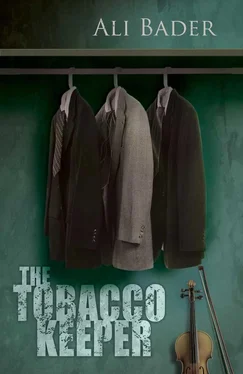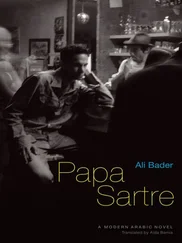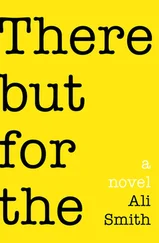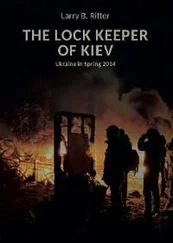The sun was disappearing behind pink clouds and the evening star was hanging in the sky, while at Tehran Airport more than six million people stood to welcome Khomeini. Crowds surrounded the eighty-year-old man as he took a helicopter to resume his journey and flew over the heads of those who thronged to welcome him. The helicopter was like a black insect flying and hovering above the people’s heads. In the morning, the state and the government dissolved before his personality.
On the following day, as Haidar sat in the leather armchair in the hall, he knew that what was happening in Iraq was loaded with significant historical implications. There was a prevalent satirical tone that was full of anger. Saddam’s statements were indirect but pointed ultimately to war. Revolutionary Iran stood in confrontation with revolutionary Iraq. Border discussions and skirmishes were all trumped-up stories that portended doom ahead. The dogs of war were undoubtedly barking, for when war came, it knocked on each and every door.
One month after Saddam had assumed power and executed his old comrades, and one year after Khomeini had taken power in Tehran, Haidar and Tahira went out of their small house on Al-Karradah Street in their red-and-gold Cadillac to visit the Sofer restaurant in Al-Mansour.
Haidar Salman was keeping a piece of bad news from Tahira. Her uncle Saleh had been arrested and, only two days afterwards, executed.
Tahira was ill and nobody wanted to tell her the news.
Haidar and Tahira sat near the door and ate carp cooked in black pepper, with apple tart for dessert. Then they went back home.
‘Do you think there’ll be war with Iran?’ Tahira asked.
‘Of course, there’s no doubt about it.’
He later wrote to Farida describing how he was deported with Tahira to Iran: ‘None of us realized that a war would be waged against us the very next day.’
At the beginning, there was an escalation of warmongering in the papers, which in both countries turned into a vulgar kind of celebration, with idiotic, shabby rhetoric using superficial, lame and deceptive language. History was being falsified and people were dancing on the edge of a bloodbath. Slogans were being formulated in elevated, poetic language in order to glorify death and destruction.
Baghdad had more than its fair share of poets who excelled in the art of flattery, and Tehran had its artists who mastered the art of kitsch. Baghdad was full of slogans; Tehran was full of slogans and posters. Elegant poetry had gone and was replaced by shocking platitudes and vulgarities. Art and ideology had become one, and more and more the events of the past were being exploited, with each side trying to unearth a hidden and forgotten history. New genres appeared, other than biography, history and essays. In the beginning Saddam depended on folkloric poetry. The popular poet was the true voice of the philosophy of vulgarity and the anger of the people. In Tehran, the visual artist, the creator of posters, controlled the streets with their revolutionary slogans and images that made use of Persian rhetoric.
But where was music?
In Baghdad, music was greatly abused. It was put in the service of anthems that incited people to kill.
In Iran, where singing was banned, music was put to a different use. Classical music was promoted, but it was a type of music impressed with anger and outrage. In Baghdad, music contained a marked streak of ugliness that was created by tyranny. But it was an ugliness that was cleverly presented. Tehran, for its part, banned singing and made Shahin Farahar turn away from composing symphonies about Omar al-Khayyam and al-Firdawsi to composing religious rhapsodies.
Baghdad was settling its score with the past, as was Tehran. They stood in headlong confrontation with each other.
Haidar Salman naturally realized at the time that everything in Tehran and Baghdad contained a streak of kitsch. He tried to develop this idea further, thinking quickly and ecstatically. In the course of one night, he realized the presence of common fictions in these two enemy states. It was a strange experience that was very different from anything he could possibly imagine. The art promoted by dictatorial regimes took its power not only from the scandals it propagated, but, more importantly, from its vulgarity and depressing futility.
Both word and image were debased. Iran used images to create impact by presenting the thronging crowds raising their hands mechanically and shouting. The revolution depended on the image of the masses. Iraq, on the other hand, turned popular phrases into poetry and vulgarity into verse. The meanness of everyday existence changed into perplexing nightmares.
There was anarchy in both countries. Each confronted the other with an artificial system that was eloquent and ridiculous. Pure chaos merged with raucous anarchy and old romantic babble.
Vulgar art endorsed politicians and encouraged their violence. Cheap eloquence endowed murder, destruction and annihilation with a high aesthetic value. Vulgarity was elevated onto a moral plain, causing hatred to increase. Baghdad’s songs and verses created irrational zeal, while in Tehran the images on the posters, placards and advertisements became rhetorical tools. In Baghdad, art embodied insolence, while in Tehran it represented faecal obsessions.
Each country went back to its heritage. Arab Baghdad went back to poetry and words, to the spellbinding rhetoric that the Arabs had mastered. It went back to the undiminished magical power of prose, but with an additional strain of chaos and obscurantism. It was like being lulled to sleep by words without meaning. Iran, on the other hand, went back to its love of imagery, to its drawings and miniature paintings. While the former was lost in its verbal muddle, the latter fell into the vulgarity of revolutionary artists who were far from professional.
In the Green Zone, I established friendly relations with some of the neighbours that I felt might be able to help in some way with my work. I got to know an Iraqi woman from a fairly aristocratic background called Aida al-Nadim, who’d been the wife of an Iraqi consul in Tehran. She was now divorced. She had blonde hair and a very solemn look, and lived in the apartment opposite to mine. We sometimes met on the landing, passed face to face on the stairs or saw each other at the entrance to the building. We exchanged greetings, mostly in the evenings. After a week had gone by, we began to shake hands and exchange news. Our friendship soon grew and she invited me into her apartment to listen to Iraqi music and to have coffee. She made me understand a great deal about life in Tehran before I travelled there. She had important information that wasn’t to be found in books or tourist guides. She knew about men and women’s lives, people’s views on the situation in their country, the names of cheap hotels, the names of shops, the names of Iraqi families living in the city, as well as a host of other things. One day I asked her whether her husband still worked in Tehran.
‘You mean my ex-husband?’
‘Yes. Do you think I can benefit from his knowledge and experience? I want to go to Tehran to write a newspaper article.’
‘My daughter lives there. I’ll call her and tell her.’
‘Great,’ I said.
I was over the moon with happiness that day. It was important for me to find someone to help me deal with information and put it to use in that country, for naturally my stay wasn’t going to be for long. I would have to do things quickly. Having someone familiar with life there and with expatriate Iraqi families was of the utmost importance. Nevertheless I kept noting down details connected with the subject. I also worked on the documents in my possession, spending whole nights writing. I would often work until five in the morning, go to bed and wake up at noon to find my bones aching all over. I used to placate my conscience by working so hard. When I got up, I’d go out for a pizza.
Читать дальше












